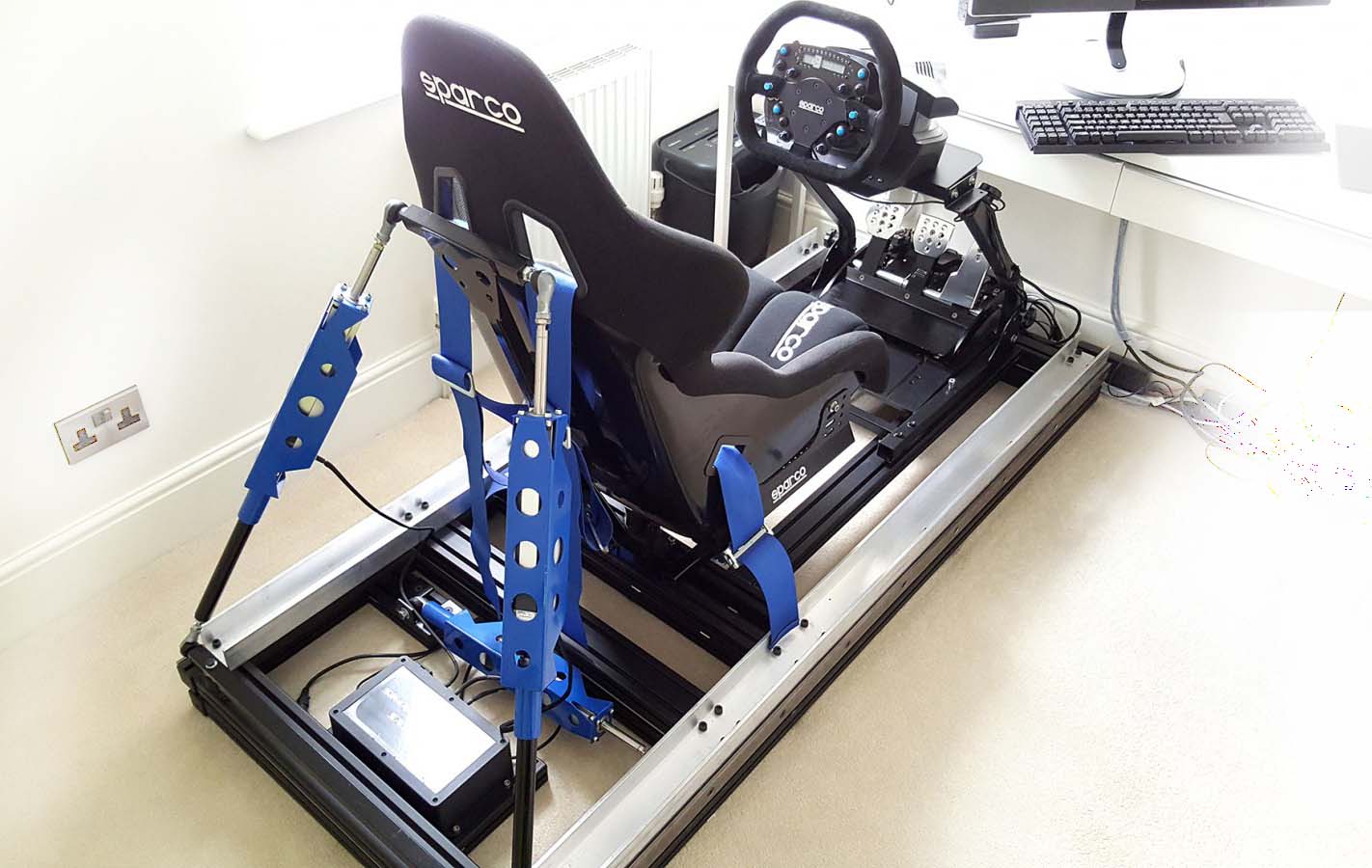
Motion for Everyone
The possibilities offered by the internet allow us to share ideas and explore new trends in the world of simulation, and motion systems are no exception.
The range of system types is wide and diverse, and deciding which motion system is ideal is a choice the end user will have to make with all the cards on the table.
Some opt to spend large sums of money buying finished systems from leading brands, while others choose to arm themselves with patience and build their own systems, using some materials from these companies or crafting them entirely themselves. Anything is possible, and several paths can lead us to the “ideal system.”
The diversity of systems and models in this field is so vast that we’d need several issues to cover them all, so we’ll review the main systems and their differences to understand what each one offers.
TYPES OF MOTION SYSTEMS
There are countless models grouped by axes, type of motion, or materials. The most common classification is by the number of axes, but at a user level, we could divide them into two main groups: platform systems and flex-type systems. The key difference lies in the fact that platform systems apply motion to the entire structure, including the steering wheel and pedals, while flex-type systems only partially apply motion to the seat or bucket, leaving everything else stationary.
Most motion systems are based on these two models.
In terms of sensations, they are very different. We won’t go into detail for now about which offers a better experience, but essentially, flex-type systems focus on forces applied solely to the driver, while platform systems simulate the movements of the car’s cockpit. Of course, this is just a brief overview of the many models and differences between them, and things can always get more complex by adding more axes.
From this basic configuration, there are numerous options to articulate the movements of our simulators. For example, we can find hybrid systems between platform and flex types that combine features of each to emulate effects like loss of traction while simultaneously applying forces to the driver’s back. This way, we don’t have to sacrifice the strengths of either system and can enhance our simulator’s sensations in a much more personalized way.
In future installments, we’ll look in more detail at how simulators apply forces through different axes.
As for motor types, the most commonly used are SCN5 actuators, though electric motors or pneumatic systems are also options.
The main advantages of these actuators are their precision and ease of use; however, their price can be high. In contrast, electric or pneumatic motors are more affordable but come at the cost of greater complexity in use and installation, often requiring knowledge of electronics, computing, or even mechanics.
SIMULATORS FOR ALL TASTES, BUT NOT ALL BUDGETS
Below, we’ll showcase some of the most popular commercial simulators.
SIMXPERIENCE
This American company offers a very comprehensive simulator, with its strength lying in the motion and vibration system managed by a robust software called Sim Commander.
It uses a two-axis flex system powered by SCN5 actuators, priced at around €2,100 (including only the actuators and motion structure).
PAGNIAN
Next Level Racing, a U.S.-based company, offers a simple structure to which we can attach a separately sold motion system called the Motion Platform V2.
It’s a platform system made up of four electric motors that lift the seat from below, reproducing up to four axes of motion. Its price is approximately €2,600, excluding the structure and seat.
Unlike other systems, this type applies force from the bottom up.
CXC MOTION PRO II
The American company CXC Simulations, based in Los Angeles, presents one of the most well-known commercial simulators, the MOTION PRO II. It features a two-axis system that perfectly emulates the forces applied to the driver. The materials and details are meticulously crafted, and its two SCN5 actuators boast top-tier precision.
We can configure various elements or choose from three available packs. Its price ranges from €43,300 to €65,000.
These systems are among the most precise on the market.
CRUDEN SIMULATION
Based in Amsterdam, this company’s main strength is its research into all kinds of simulation-related technology, creating not only driving systems but also those for aircraft and boats.
Their configurations rely on expensive pneumatic systems and top-quality materials, making their simulators less affordable. Their most famous simulator is the Hexatech, a six-axis platform system with motion power that, for brief moments, can make us feel sensations akin to a single-seater race car. Its price hovers around an incredible €130,000.
Only within reach of a few.
AND IF YOU CAN’T AFFORD ONE…
Simply build it yourself. In recent years, a new avenue has emerged where people from various fields like electronics or industry are crafting their own motion systems. This has had a significant impact online, as most simracing forums have become hubs for idea-sharing, and there are all sorts of guides to build your own motion system for less than €1,500.
Perhaps the most surprising aspect isn’t just the low construction cost—though that’s notable too—but that, in many cases, these homemade systems match or even surpass the performance and sensations of commercial systems costing thousands of euros.
Undoubtedly, this has caused a small disruption in the market over the years, with small businesses or individuals beginning to market low-cost systems designed to integrate into static simulators like the Playseat.
This trend only benefits the end consumer, who ends up with a much broader range of options to fit their budget. However, most DIY simulators come with the downside of requiring users to learn how to manually configure complex programs, adjusting all the parameters for each game, which keeps these systems far from being suitable for the average user.
